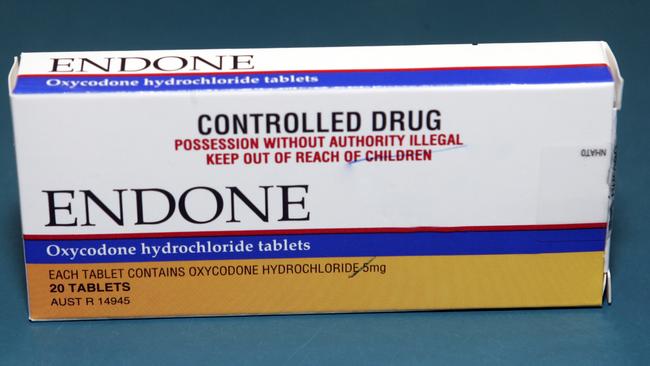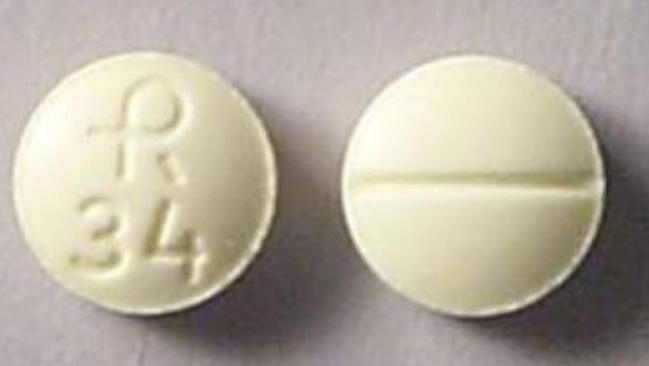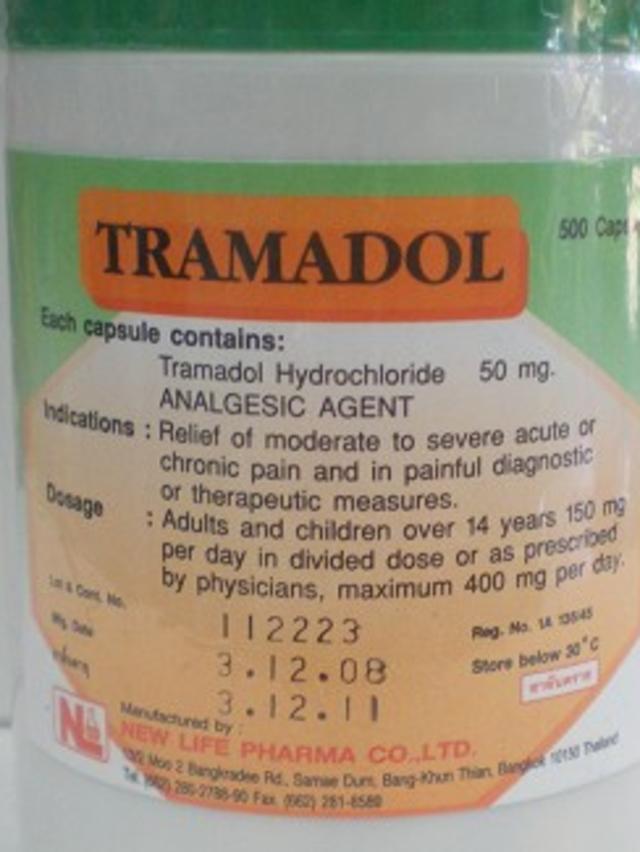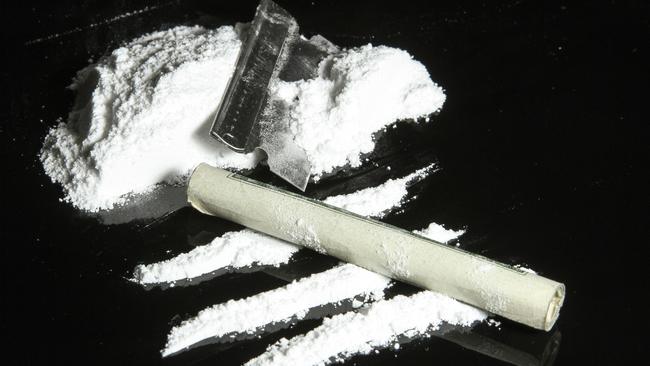Common prescription drugs behind a wave of Australian overdose deaths
COMMON prescription drugs are behind a surge of deaths in Australia, with new data exploding assumptions about overdose victims. SPECIAL REPORT
VIC News
Don't miss out on the headlines from VIC News. Followed categories will be added to My News.
MIDDLE aged and older Australians are in the grip of an unprecedented drug crisis.
New data obtained by the Herald Sun reveals a surge in deaths among older Australians, with almost eight in 10 accidental overdose deaths now men and women aged 30-59.
The figures challenge the traditional image of drug deaths being young people overdosing on illegal drugs in inner city drug hot spots.
Rather it is the middle aged and older, particularly men, and increasingly those in regional Australia who are overdosing on common prescription painkillers such as oxycodone and benzodiazepines.

And Victoria has experienced one of the biggest rises in rural overdose deaths, up a whopping 48 per cent in one year.
A report by the Penington Institute using data prepared by the Australian Bureau of Statistics, compares drug deaths across a decade to 2014 — the most recent year for which figures are available.
“The data suggests that older Australians are facing an unprecedented overdose crisis,” Penington Institute CEO John Ryan said.
“If the current trend continues, in five years the age of people most likely to die of overdose will be those aged 50 to 59.”

All these families are suffering in silence
In 2014, 1136 people died of accidental overdoses and next year, for the first time, that number is on track to outstrip the national road toll, and to more than double the 705 deaths recorded in 2004 the following year.

Currently Australians aged 40-49 are the most likely to die of an accidental overdose, with 342 deaths nationally in 2014, followed closely by those aged 30-39, 304 deaths, and 50-59 year olds, 238 deaths.
“These grim figures underscore just how severe the overdose epidemic is right now in Australia,” Mr Ryan said.
“Action needs to be taken to address this public health crisis.”
Mr Ryan said it was time for Governments to make significant funds available to reduce the toll.
“When you consider the kinds of investment that has been put into reducing the road toll the question is whether a similar investment will be made to better educate the community about the risk of overdose,” he said.
“We are calling for that investment.”

St Kilda-based Salvation Army social worker and founder of this week’s UN-backed International Overdose Awareness Day Sally Finn said her experience was that the trend identified by the Penington report has continued unabated in the past two years.
Ms Finn said while street drugs like “ice” remained a real problem the Salvos had seen a marked ageing of drug takers contacting its crisis services.
And 16 years since organising the first overdose awareness day, Ms Finn said Australians were still reticent to discuss the issue.
“All these families are suffering in silence,” she said.
“We are yet to have a really big discussion around overdose and across all sectors of the community and what will help to lower that rate.”

We are talking about normal people who have come to harm, not ‘drug addicts’
Ms Finn called for a campaign to educate GPs, patients and the public about the potential pitfalls of taking opioid-based painkillers, and of mixing them with other drugs or alcohol.
“Oxycodone is the same drug as heroin in a way — it has the same properties. It’s a great asset in many ways but it has some dangers and we’re not nuancing our response enough to protect people.

“A lot of people begin taking these medications because they have been prescribed them for legitimate pain reasons and they fall into behaviours which mean they struggle not to use them.”
Ms Finn also questioned why people on high-dose opioid-based painkillers were not, as a matter of course, also being prescribed the newly available overdose reversal drug Naloxone.
She called for more research to understand the factors at play in medicinal addictions and deaths.
“These are accidental deaths no-one is intending to die,” she said.
Addiction expert and Victorian Poisons Information Centre medical director Dr Shaun Greene said the immediate challenge was to find the resources to assess the large number of patients already taking high dose painkillers, their risk factors, possible alternatives and the need for intervention by addiction and chronic pain specialists.
The Penington report shows the number of people dying of overdose deaths in their 50s and 60s has more than tripled in the past decade. Over the same period deaths among those aged under 30 have fallen by a quarter.
In 2014 alone Australia witnessed a 14 per cent rise in accidental overdoses — five per cent in metropolitan areas and 33 per cent in regional Australia. Deaths jumped 21 per cent jump among 40-49 year olds, 37 per cent among those aged 50-59 and a worrying 42 per cent rise among the 60-69 age group.
Across the decade there has been a 43 per cent rise in overdose deaths in 30-39 year olds, a 96 per cent jump in the 40-49 year age group and a staggering 235 per cent increase in the 50 to 59 age group. In regional areas accidental overdose deaths have almost doubled in just six years.
Prescription drugs are now responsible for more than seven in every 10 overdose fatalities, with opioid medications the most common cause, with a 39 per cent increase in those deaths in 2014.

The hidden toll: ‘I might not wake up next time’
AFTER a dangerous addiction to prescription medication and several accidental overdoses nearly ended Jason Grant’s life, the father of two said he knew he needed to make a change.
“It was purely accidental, but I thought, I need to stop because I might not wake up next time,” the 45 year old said.
Mr Grant said his problems started when he was prescribed Valium by his doctor to help relieve the stress of a difficult divorce.

Soon, the Croydon man was taking the drug daily along with Temazepam, to help him sleep.
“The drugs helped me get out of the reality of life. Everything just faded away into nothing,” he said.
Over a period of almost seven years, his addiction took a devastating toll on his life.
His ex-wife no longer let him see his children; he was falling asleep at work, lost his license and friends.
“The more (drugs) I took, the less I felt. I became very isolated,” he said.
After failed attempts at rehab and a number of ‘scary’ overdoses, Mr Grant finally came to a turning point when he connected with a group of men who shared his experience with addiction.
“Nothing else seemed to work; the hospitals, the rehab, but being around these other guys and knowing they’d been through the same thing and come out the other end, gave me hope,” he said.
Two years after giving up the prescription drugs, Mr Grant said his life had improved dramatically.
“I get to see my kids again, I have a job and a car. Life is so much better now,” he said.
Mr Grant, who is still connected with the group who helped him overcome his addiction, urged others that were struggling to seek support.
“Try and connect with others who have been through it and just don’t isolate yourself,” he said.

More likely to die than heroin street addicts
THEY are supposed to kill pain but increasingly the pills prescribed to thousands of Australians with a promise of a better life are instead ending their lives.
This silent killer has now left middle aged and older Australians more vulnerable to dying of an accidental overdose than a 25-year-old street addict was at the height of Australia’s heroin glut.
Unlike heroin addicts, who are most likely to use in the company of others who would raise the alarm in case of overdose, most users of prescription painkillers take them in the privacy of their own home.
Too often they die alone in the middle of the night without any hope of help.
And unlike illicit drug users most have never made a conscious decision to put themselves in harm’s way.
So suddenly there is a highly addictive drug that is readily available and is 100 per cent high-grade pharmaceutical purity
“We are talking about normal people who have come to harm, not ‘drug addicts’, not ‘drug users’, not ‘druggies’, says Dr Shaun Greene, addiction expert and medical director of the Victorian Poisons Information Centre at the Austin Hospital.
“These people have quite legitimately started on these medications for warranted treatment of pain but addiction is a disease and some people are more prone to addiction than other people.
“Many of the deaths will literally occur during the night when they are sedated and they lose their airway or they literally stop breathing.
“Obviously if you die you don’t seek medical attention and if you wake up in the morning and just feel like you’ve had a deep sleep you probably don’t seek medical attention either.”
Underlying health issues, such as sleep apnoea or chronic respiratory disease, also make middle aged and older Australian’s more vulnerable to accidental death.
And they are more likely to suffer the unintended consequences of mixing powerful pain medications with sleeping tablets and alcohol.
“It may seem a strange thing to say but people either die or they recover,” Dr Green said. “They tend not to seek medical intervention because most deaths occur as a result of sedation — there’s too much of the oxycodone or benzodiazepines, maybe combined with alcohol.”
Dr Greene says opioid-based painkillers like oxycodone are “essentially high grade heroin’” but with easier availability.
“In rural Victoria it wasn’t common that you had a heroin dealer down the street, now you do because you just go to your local pharmacy and you get your ‘heroin-equivalent’ oxycodone there,” he said.
“So suddenly there is a highly addictive drug that is readily available and is 100 per cent high-grade pharmaceutical purity.
”Oxycodone has been heavily marketed … and in the United States a number of their executives of the pharmaceutical company that marketed oxycodone have now received prison terms because of their claim(s) that it wasn’t addictive and it obviously very much is.”
Dr Greene said many older Australians become hooked on such meds after being prescribed them to deal with chronic pain conditions that accompany ageing.
And it is this transaction that Dr Greene believes should be one focus in attempting to tackle the problem.
He says better education of doctors, patients and the wider public about the dangers and appropriate use of pain medications will lead to better and safer choices.
“We as a medical speciality haven’t recognised the potential harm and we’ve been using these medications on patients that are not going to benefit from them and we haven’t been identifying those patients who are going to do badly, who may have problems with addiction.”
Dr Green said opioid-based painkillers were very good for short term severe pain and cancer related pain but there was little evidence that using them daily for chronic back pain or rheumatoid pain leads to a higher quality of life.
“In fact there’s lots of evidence to say that if you do take one of these medications every day you are less likely to get back to work, you are less likely to have a reasonable quality of life and you’re more likely to have side effects.
“We can do lots to change the future and how we supply pain medication in a more responsible manner, unfortunately we have this large group of people who have been harmed or who are using these medications and are still at risk of drug related overdose and potentially death.”
Dr Greene said the immediate challenge was to find the resources to assess patients already taking high dose painkillers, their other risk factors, possible alternatives and the need for intervention by addiction and chronic pain specialists.
“Victoria needs more resources in terms of addiction medicine and pain specialists and I think the community is recognising it is a very big problem and there are not adequate resources to deal with it.
“I would love to know the amount of money that is spent nationally and at a state level preventing road deaths and raising awareness as opposed to this new scourge of accidental drug related deaths.”


